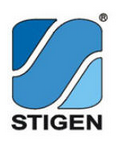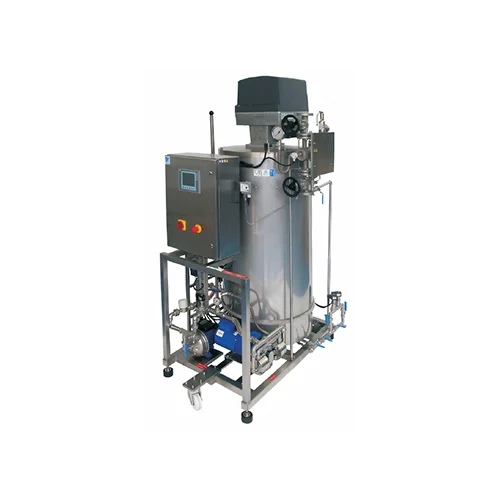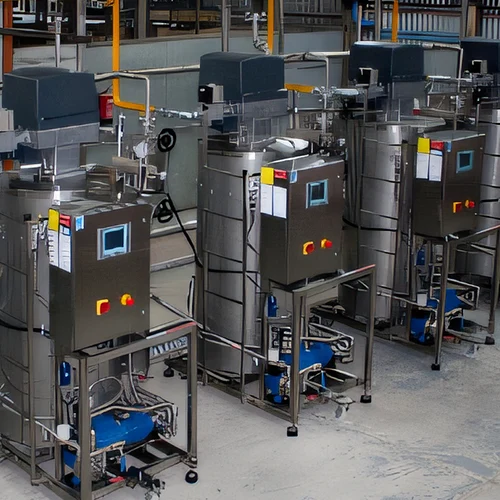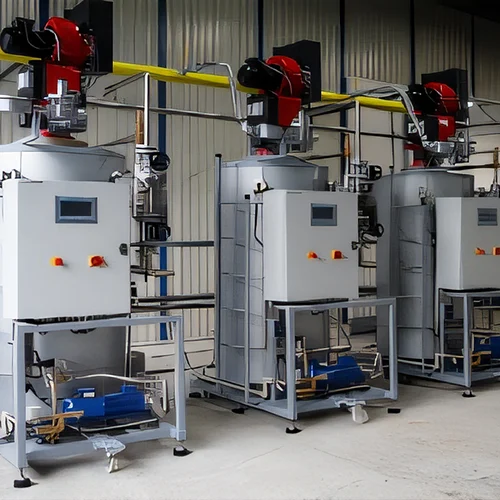The steam is produced in classical steam boilers, distributed through steel (black) pipes to the appliances. Steam boilers and developers work with boiler feed water, the quality of which is regulated by the relevant STN standard. This standard lays down the technical requirements for the characteristics of the water used for supply and operation so that no corrosion deposits are formed in the boilers and other parts of the system, thereby guaranteeing a sufficient service life of the steam plant. The feed and make-up water is mainly treated by dosing chemicals (phosphates, sulphites, hydrazine…). Here, conventional electric steam generators or gas steam generators are sufficient.
Definition of pure steam
STIGEN Sp. z o.o.
Steam can be divided according to quality
A. Energy steam
B. Technological pure steam
The clean steam is produced in stainless steel generators without any requirements for chemical and physical parameters of the clean steam according to STN. The quality of the clean steam is determined by industry standards and local regulations according to the application. These are mainly used in laundries, fabric dyeing, fabric stabilization…..

C. Pure steam for food industry according to EN 1672-2
Clean steam used for direct contact with food shall not contain substances which present any health risk or which could contaminate the food. The physical characteristics of pure steam for food use are determined by the technological requirements of the application.
D. Clean steam for healthcare according to EN 285+A2
Clean steam is mainly used in the healthcare sector for central sterilization and also for humidification of air in air handling units and air conditioners. Pure steam is produced from demineralised water in evaporators and developers made of stainless steel materials. Pure steam is always produced as saturated steam, i.e. steam whose temperature and pressure exactly match the steam saturation curve. The requirements for the material design and properties of the steam produced are regulated by EN 285+A2 “Sterilization – Steam sterilizers – Large sterilizers”.
The standard specifies the requirements for the quality of pure steam:
Physical parameters
- content of non-condensable gases in the vapour (max. 3,5 % v/v)
- vapour dryness (min. 0,9 or 0,95 for metallic inserts)
- steam overheating (max. 25 K)
Chemical parameters, contaminants – vapour pollution
- feed water for pure steam production
- condensate from pure steam
Pressure
- fluctuation of ±10 % of nominal pressure.
Material composition
- steam generator parts
- piping – pipes and tubes
- recommended material combinations
- specification of individual material groups ( AISI 316 group)
Material design
The main influence on steam quality is the material design of steam generators, piping, fittings, measuring and control equipment, which is determined by EN 285+A2-
In order to comply with the steam quality parameters in all indicators, it is necessary to choose the material design of stainless austenitic steel of the highest quality.
The inner surface of the pipeline must be kept as clean as possible during assembly, using welding procedures with weld root treatment with forming gas.
Pipelines must be designed in such a way that it is technically possible to chemically treat the inner surface after assembly – pickling and passivation.
With regard to the use of chemical agents – acids and alkalis, it is necessary to maintain the material properties of all fittings, as well as gaskets (Teflon).
Pure apyrogenic steam
It is the cleanest type of steam used in workplaces where sterilizers are used for the aseptic production of medical products and pharmaceuticals. The quality and quality requirements are determined by the ‘Good Manufacturing Practice’ and ‘Approved Manufacturing Procedures for Pharmaceutical Production’ regulations.

Our goal is not only to supply the equipment itself, but we try to approach each customer completely individually and propose a solution that meets their specific requirements.



